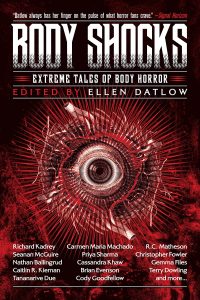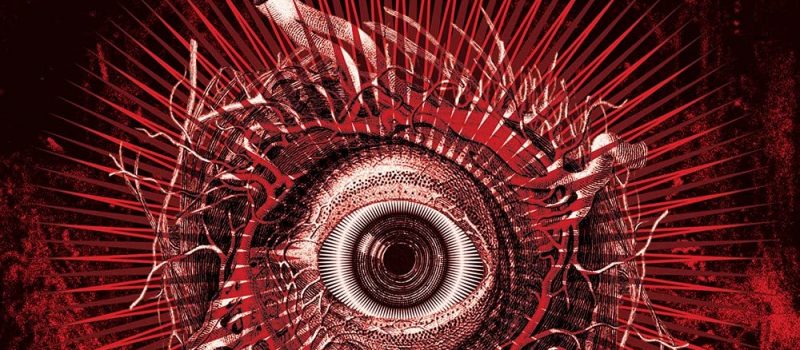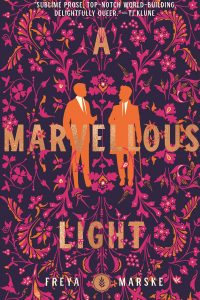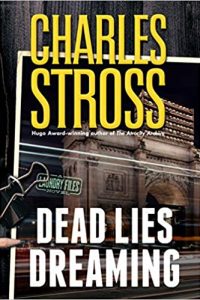Gabino Iglesias Reviews Body Shocks by Ellen Datlow
 Body Shocks, Ellen Datlow, ed. (Tachyon Publications 978-1-61696-360-6, $17.95, 384pp, tp) October 2021. Cover by John Coulthart.
Body Shocks, Ellen Datlow, ed. (Tachyon Publications 978-1-61696-360-6, $17.95, 384pp, tp) October 2021. Cover by John Coulthart.
Once in a while, an anthology comes along that demands we alter the standard review format. Body Shocks, edited by Ellen Datlow, is one of those rare books. Yes, there are stories that will get individual attention later, but this book accomplishes two things that deserve to be mentioned first. The first is that it gives readers a definitive introduction to a subgenre and explains its nature:
It [body horror] might be the most disturbing type of horror because it deals with the intimacy of the body’s integrity being breached by intentional mutilation, accidental infestations by parasites, invasion by alien forces, degeneration, transformation, grotesquery, and pain.
The second thing it does is it legitimizes body horror. This is an anthology of reprints, which means Datlow took a deep look at decades of body horror to offers narratives that, in her words, cover “a wide range in time and subject matter.” For example, Michael Blumlein’s “Tissue Ablation and Variant Regeneration: A Case Report” was Blumlein’s first published short story and came out in Interzone in Spring 1984. If horror is still seen as the strange kid in the class – despite being now more mainstream – then body horror is its strangest cousin. However, with names like Stephen Graham Jones, Nathan Ballingrud, Cassandra Khaw, Tananarive Due, Richard Christian Matheson, Carmen Maria Machado, Caitlín R. Kiernan, Brian Evenson, Gemma Files, and Priya Sharma having previous work here, and with the award-winning Datlow at the helm, Body Shocks proves some of the best voices in fiction have been and continue to be eager to play around with body horror, and when award winners and New York Times bestsellers do something, that thing becomes legitimized.
Body Shocks delivers 29 stories in which body horror is the cohesive element, but the diversity in terms of voices, styles, approaches, and other genres gives readers a deep, broad perspective and shows that is mixes well with everything from noir to dark fantasy. The anthology kicks things off with a one-two combo that sets the tone for what’s to come: Ray Cluley’s “The Travellers Stay”, which is a Kafkaesque narrative about an awful road motel in which transformations take place, and Terry Dowling’s “Toother”, a story that is at once creepy and full of history, but in which body horror takes center stage: “Victims bitten to death, post- or ante-mortem; the various odontologists’ findings give both. Their own teeth removed before, during or after; again there’s a range. Older fragments in the wounds in some instances, say, nineteen, twenty per cent.”
There are no throwaway stories here, but there are some outstanding stories. Kirstyn McDermott’s “Painless” is a dark, sensual narrative that spirals into a story of friendship and abuse. Genevieve Valentine’s “La beauté sans vertu”, which mixes the fashion industry with shocking horror in a beautifully nonchalant way, is another standout, and it has one of the best openings of the anthology:
These days they use arms from corpses – age fourteen, oldest, at time of death. The couture houses pay for them, of course (the days of grave-robbing are over, this is a business), but anything over fourteen isn’t worth having. At fourteen, the bones have most of the length you need for a model, with a child’s slender ulna, the knob of the wrist still standing out enough to cast a shadow.
Lucy Taylor delivers an earthy, post-apocalyptic dose of bloody mayhem in “Subsumption”, a story about what happens when nature has the ability to truly take over. Richard Kadrey’s “Black Neurology – A Love Story”, might be the shortest story in Body Shocks, but this tale of witnessing an autopsy is as emotionally gritty as it is short. Cassandra Khaw’s “The Truth That Lies Under Skin and Meat” has a unique format that allows the author to offer up a tale of justice and cannibalism in a truly effective way. Lastly, Carmen Maria Machado mixes fairytales and body horror in “The Old Women Who Were Skinned”, a story about vanity, torture, and missing your own skin that could be interpreted in a plethora of ways:
The second sister continued to live even after the barber hung her skin from his window, and then sold it to a bookbinder. But with no flesh to contain her body, the wet meat of her muscle and the roping of her tendons were on full display. Bits of dust and soil clung to her damp organs. She often woke to the sensation of mice scrabbling beneath her breastbone, of skittering cockroaches rounding her eye. On the rare occasion when she ventured beyond the wall, mothers would bend down to their children and point at her. “See?” they would say. “This is what happens when you worry about your looks. Such is the price of vanity.” She spent the remainder of her life wiping crumbs from her joints and crevices, tears draining through her body like raindrops sliding down a windowpane.
Body Shocks is an entertaining and gorgeously put-together book with illustrations by John Coulthart that give the impression that you’re inside a body and that said body contains a museum. The only thing that could be said about Body Shocks is that it was missing some body horror masters. For example, Jeremy Robert Johnson, Edward Lee, and Wrath James White come to mind. That said, the anthology comes in at almost 400 pages of superb fiction from renowned masters like Stephen Graham Jones and Caitlín R. Kiernan, as well as indie press heroes like Cody Goodfellow and Lucy Taylor, which shows that Datlow, like always, went all in and put together something special.
Body Shocks is a celebration of body horror that brings outstanding narratives about pain and transformation together to offer a great introduction to a subgenre that’s here to stay. Hopefully this will become a series, but if not, then it should be more than enough to inspire readers to look deeper into body horror and inspire publishers, anthologists, and editors to create opportunities to offer more of it.
Gabino Iglesias is a writer, journalist, professor, and book reviewer living in Austin TX. He is the author of Zero Saints and Coyote Songs and the editor of Both Sides. His work has been nominated to the Bram Stoker and Locus Awards and won the Wonderland Book Award for Best Novel in 2019. His short stories have appeared in a plethora of anthologies and his non-fiction has appeared in the New York Times, the Los Angeles Times, and CrimeReads. His work has been published in five languages, optioned for film, and praised by authors as diverse as Roxane Gay, David Joy, Jerry Stahl, and Meg Gardiner. His reviews appear regularly in places like NPR, Publishers Weekly, the San Francisco Chronicle, Criminal Element, Mystery Tribune, Vol. 1 Brooklyn, the Los Angeles Review of Books, and other print and online venues. He’s been a juror for the Shirley Jackson Awards twice and has judged the PANK Big Book Contest, the Splatterpunk Awards, and the Newfound Prose Prize. He teaches creative writing at Southern New Hampshire University’s online MFA program. You can find him on Twitter at @Gabino_Iglesias.
This review and more like it in the September 2021 issue of Locus.
 While you are here, please take a moment to support Locus with a one-time or recurring donation. We rely on reader donations to keep the magazine and site going, and would like to keep the site paywall free, but WE NEED YOUR FINANCIAL SUPPORT to continue quality coverage of the science fiction and fantasy field.
While you are here, please take a moment to support Locus with a one-time or recurring donation. We rely on reader donations to keep the magazine and site going, and would like to keep the site paywall free, but WE NEED YOUR FINANCIAL SUPPORT to continue quality coverage of the science fiction and fantasy field.
©Locus Magazine. Copyrighted material may not be republished without permission of LSFF.







